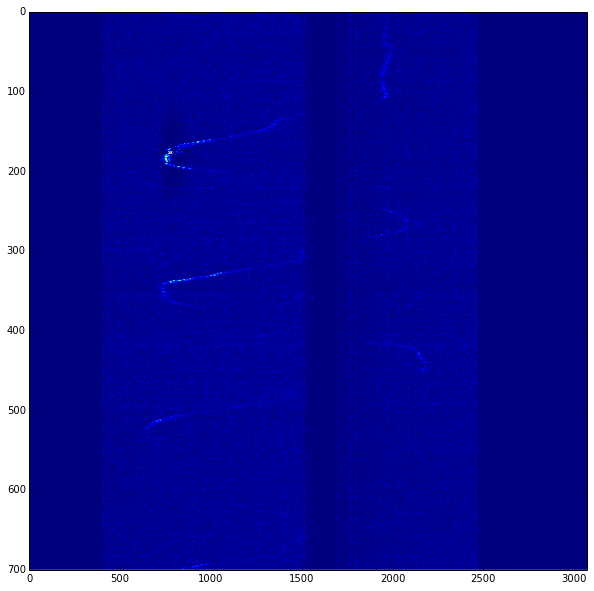Problem statement

In the dataset above, you can notice a continuous path and then a noise-band at around 320-400 on the x-axis. I want to be able to apply a filter that amplifies the continuous path while suppressing the noise-band. The data inside the noise-band is useless.
Attempt 1
I am new to signal processing, but I took a shot at designing my own filter. I tried designing a minimum filter. I defined it to make the output signal $ S $ the minimum of the next $ w $ terms in the input signal $ F $: $ S[n] = \min \{F[x] | x \in \{n, n+1, n+2, ..., n+w\}\} $
for i in range(len(original_signal) - window_len):
filtered_signal[i:i+window_len] = min(original_signal[i:i+window_len])
It represents each pixel by the lowest pixel in the area which should make the noise go away because the noise band will have a lot of low values in between a lot of high values. It takes out too much of the signal as well.
This is an image showing what the filter took away (the difference between the original signal and the filtered signal)

Attempt 2
A median filter will not work, because the median of the noise-band is relatively high (1e4):

whereas the median of empty space is not that high (1e3):

So the median filter would not reduce the noise to be even with empty space.
Do you know any filters I could try?
Additional Data
Histogram of desired signal:

All histograms normalized and put on the same axes:




